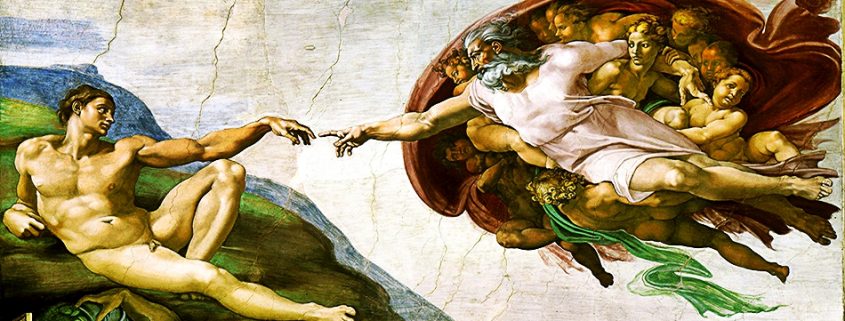Michelangelo
If you look at one of the most talented and inspirational artists then and now, you will have to say it was and is Michelangelo. In his lifetime he and the world saw changes after and during the decline of the Roman Empire with changes sweeping through scientific, politics and religious beliefs. He was a man with extraordinary passion and energy and outstanding talent with one of his early works for the Vatican, the Pieta reflecting that.
Born in Caprese on 6 March 1475 he was younger that da Vinci and the first to be recognized while he lived. Also while still alive his biography was published and he became the most documented artist during his time and the 16th century. Even though there was an understanding between himself and da Vinci they each had big personalities and wills with complete different outlooks and attitudes towards art.
He had zero interest in schooling even though he was sent to school in Florence at age six. His choice and passion was for churches and watching painters then draw his sights. He trained as apprentice for Ghirlandaio when he was thirteen and here he was also taught draftsman ship and technique of Fresco.
After a year as apprentice he was fortunate to move to the Medici family place where he studied with Lorenzo the Magnificent and the sculptor Bertoldo di Giovanni where he was influence also by greats to come including Donatello, Masaccio and Giotto. Other living artists, thinkers, writers and philosophers he met at the same time during his stay there included Pico Della Mirandola, Marsilio Ficino and Polizano. During this period Michelangelo received his first two commissions doing sculpting, which he had a greater passion for. It was the Battle of the Centaurs and Madonna of the Stairs. Even though a mere teenager he showed tremendous talent and expert in accurately portraying human form. It is believed that his passion for human form caused his deteriorating health as he did at that time retain permission to study corpses in order to learn more about anatomy.
Instead of painting he continued making name as sculptor and his sculptures include Pieta, and David. During this period he made one of his most remarkable works taking him four year to complete. It was the fresco on the Sistine Chapel’s ceiling and it consists of more than three hundred little figures and the area it reaches is more than five hundred square meters. It is from Michelangelo that most ceiling painters including Raphael took their inspiration and influences.



